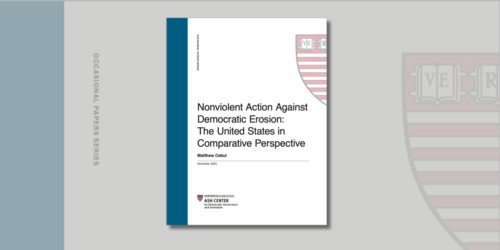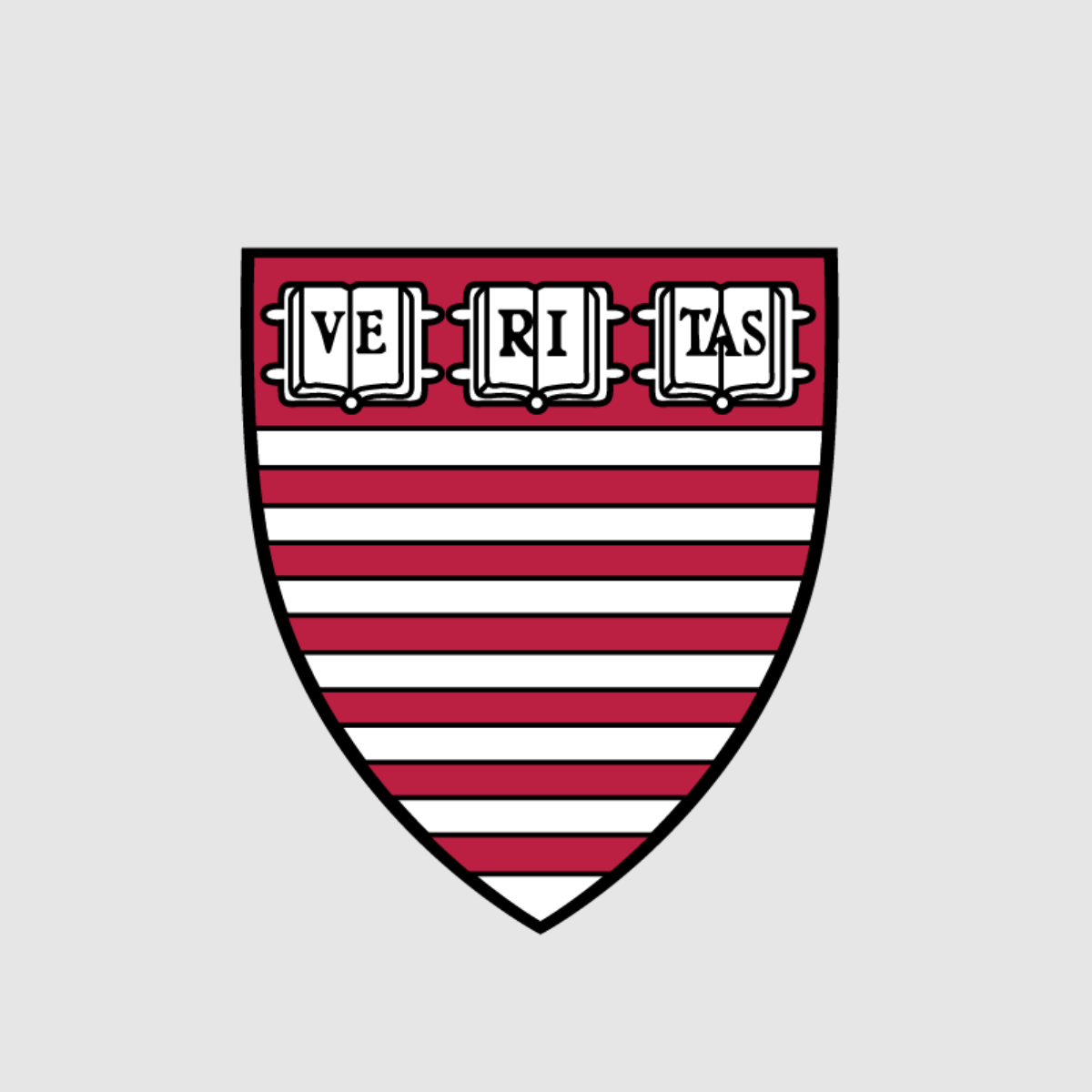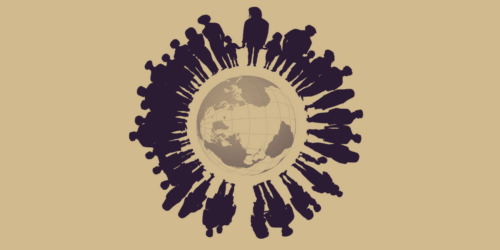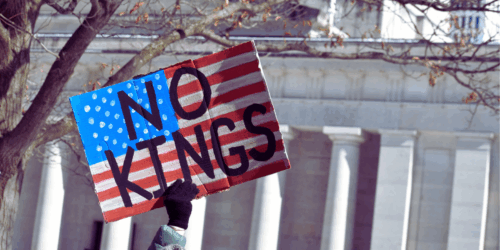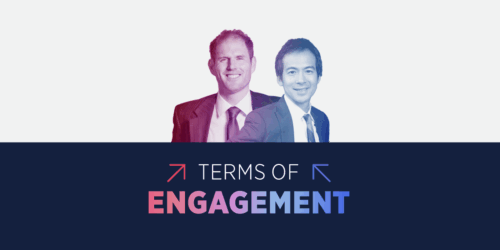Over the past few weeks, the burst of pro-Palestine protests, rallies, demonstrations, vigils, and direct actions in the U.S. that followed Hamas’ October 7th attacks on Israel and Israel’s military response to them has swelled into a sustained wave that is almost certainly broader and larger than any previous pro-Palestine protest wave in U.S. history. As Jeremy Pressman and I noted in our recent interview with Good Authority, by late October, the current wave had already surpassed its 2021 analogue in size and spread, and the ensuing 10 days have only brought more and larger actions across many more localities.
Since October 7, Crowd Counting Consortium (CCC) has recorded more than 950 pro-Palestine protest events in 317 different cities and town across 48 U.S. states, the District of Columbia, Puerto Rico, and Guam. Across the 609 (64%) of those events for which we have information about the number of participants, our total estimated crowd size is about 520,000, with a median crowd size of 150 and maximum of 160,000 in Washington, DC, on Saturday, November 4 (per our usual practice, we arrive at that 160,000 figure by averaging the lowest reported size, “tens of thousands”, which we conservatively treat as 20,000, and the highest, “an estimated 300,000”).
The stack of charts below summarizes our protest event data by week to identify trends in the growth and evolution of this mobilizational wave. The weeks used in this summarization run from Monday to Sunday, so Week 1 is actually just two days, October 7–8. The final week, Week 5, ends yesterday, November 5. Among the notable trends in those charts, and bearing in mind that data for the most recent week are subject to the most change as we see additional events:
- While the weekly count of events have recently stabilized in the low hundreds, that’s still a large number, comparable to the mobilization we saw in 2022 in response to the Supreme Court’s reversal of Roe v. Wade at its peak.
- The past week saw the largest crowds by far, led by that massive march in DC; a smaller but still huge one in San Francisco on the same day; events that drew thousands to the streets in New York City, Portland,and Minneapolis; and dozens of other events in places like Anaheim, Baltimore, Boise, Dallas, Detroit, LA, Oakland, Philadelphia, and Seattle that brought out many hundreds.
- In their signs and chants, protesters often made references to “apartheid” at the start of the wave, but the rhetorical empahsis in the past few weeks has shifted to “genocide” and calls for a ceasefire as the death toll in Gaza has climbed beyond 10,000, including more than 4,000 children. As that’s happened, protesters have also called out President Biden by name (or the nickname “Genocide Joe”) more often.
- We saw no direct actions in the first nine days of the wave (Weeks 1 and 2 in the charts), but they have become increasingly common over the past three weeks, with more than 20 in the past week alone. Many of these were sit-ins or blockades at the offices of U.S. lawmakers led by Jewish Voice for Peace and IfNotNow that led to most of the hundreds of arrests summarized in the chart above, but we have also seen, among other things, an attempt to block the departure of cargo ship from the Port of Oakland; a die-in blocking the entrance to a Raytheon facility in Tuscon at rush hour; and graffiti and other vandalism at the offices of Israel-based military tech company Elbit Systems and its subsidiaries.

What the charts don’t show but you can see in reporting from these events is how diverse the crowds have been across all sorts of dimensions, especially as Israel’s bombardment of Gaza has dragged on and calls for a ceasefire have grown louder. Movements rarely achieve this kind of breadth and diversity, and the ones that do often have more durable effects on policy and attitudes.
- Many events have been family affairs, with crowds ranging from infants to the elderly.
- Established Palestinian– and Muslim-led groups have organized many of these actions, but Jewish groups supporting Palestinian liberation have also played a big role in the past couple of weeks, leading many of the direct actions accounting for the lion’s share of the 100s of arrests shown in the chart above.
- Pre-existing coalitions of anti-racist, anti-colonialist, anti-imperialist, anti-capitalist, and anti-fascist organizations have coordinated activity in some areas, especially larger cities, while in other places we’ve seen the emergence of new coalitions and even individual organizers leading repeated events.
- Student groups — including but not limited to Students for Justice in Palestine — have organized many of the events on college campuses, but most of the events in this wave have not taken place at schools.
- Flags spotted at these events suggest broad international solidarity as well. In addition to the nearly-ubiquitous Palestinian flag — and, occasionally, the American flag — we’ve seen protesters carrying flags of Algeria, Armenia, Bangladesh, Barbados, Chile, Columbia, Cuba, Iraq, Ireland, Lebanon, Libya, Mexico, Morocco, Pakistan, the Philippines, Somalia, Syria, Turkey, and Yemen. We’ve also had occasional sightings of the Wiphala, Communist, Peace, and Anti-Fascist flags.
- Flags representing Hamas have been reported or evident to us in photos or video at just one protest: this past Saturday in Evanston, Illinois, where organizers reportedly asked the protesters carrying them to move away from the main crowd.
- We’ve seen signs, flags, and banners identifying participants as gay, queer, or feminist at a smattering of events as well, though those have certainly been scarcer.
For more information about CCC and access to the most recent public compilation of our data, please visit our GitHub repository.
